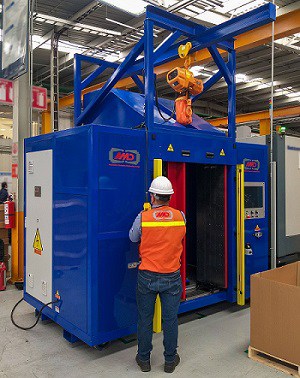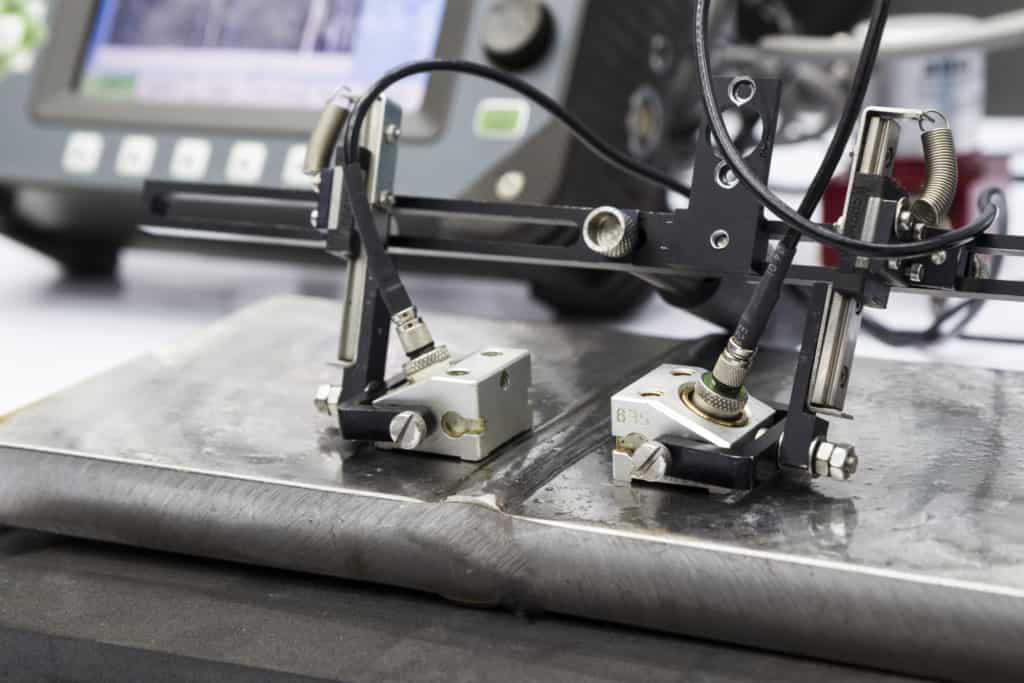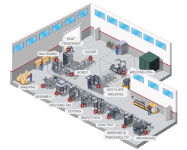The Facts About Hot Plate Welding
Leave a CommentWhat is Hot Plate Welding?
Hot plate welding is a method of joining thermoplastic parts in a permanent, molecular, and frequently hermetic bond. During the process, a heated table called a platen is heated to a specific temperature. Next, the two joining surfaces are brought into contact with the platen for a precise amount of time in order for them to melt before being joined together. A proper hot plate welded joint will be just as strong, if not stronger, than other areas of the part.
Almost any thermoplastic material can be joined using hot plate welding, which has led it to be a frequently chosen solution for numerous applications. In cases where uniform weld flash, hermetic seals, or multiple parts per cycle are necessary, hot plate welding is frequently chosen as the preferred method.
What Is the Process of Hot Plate Welding?
Hot plate welding is a direct thermal contact process that creates a clean joint. This process allows nearly any shaped part to be joined together while eliminating the need for glues, adhesives, and solvents. It can be performed horizontally or vertically, and it can be used with complex geometric shapes, curved surfaces, and internal walls.
As mentioned above, hot plate welding utilizes a heated platen. Once heated to a specific temperature, the plastic parts that are being welded are pressed against the plate to melt and soften the joint interface. To complete the weld, the melted parts are immediately pressed together.
Hot plate welding is a very forgiving process where parts are bent or deformed due to the injection molding process. If parts are taken out of the mold at high temperatures, the contractions of the plastic while cooling can bend or deform the parts. In a hot plate welding process, the parts welded are pressed against a metal plate that has the desired shape. From there, the plastic melts and takes the form of the hot plate so any deformation is corrected for a perfect result. This is particularly useful as the parts get bigger because it is more difficult to maintain tight tolerances.
With some type of plastics, the adherence of the melted plastic to the hot plate becomes a problem. To solve this the hot plate is sometimes coated with Teflon or other materials that prevent adherence. Another option is bringing the hot plate to a position very close to the part so that radiation from the plate can melt the material without actually touching it, thus not having the opportunity to adhere.
In our machines, we analyze the size and shape of the part and include as many heat zones as needed on the heat plate to obtain a uniform melted surface on the plastic parts. Each heat zone has independent temperature control. Another feature is that the movements of the parts and the heat plate are servo-controlled giving the process precise dimensional control of the melted material surface and the final pressing position of the welded components. We can also make the heat plate horizontal or vertical depending on the characteristics of the parts to be welded. We have made machines with different welding plates in different positions that weld at the same time. This applies to parts like automotive intake ducts that have many PCVs ports and connections that need to be welded in different locations and orientations.
When to Use Hot Plate Welding
There are several welding methods to consider when joining plastics; however, there are certain circumstances where hot plate welding is the preferable solution. If you are working with large components, or if the product has a complex geometry, hot plate welding would be the most effective joining method. It’s also an excellent choice for applications that don’t tolerate loose particulate or applications requiring a high-strength or hermetic seal.
In addition to these instances, many components can benefit from the low-stress, high-strength nature of hot plate welding. It is an effective method for small parts with simple geometries, and it is frequently used with injection-molded components. It is also ideal for joining plastic pipes in applications where a completely leak-proof seal is required.
Hot Plate Welding Solutions from AMD
Advanced Manufacturing Development (AMD) offers welding automation packages tailored to each customer’s exact specifications. Our knowledgeable engineering team can offer weld process recommendations that optimize your productivity and functionality. If your application involves plastic materials, our hot plate welding machines can provide a solution that fully meets your needs.
AMD is located in Texas, where our team of over 100 engineers creates expert automation solutions. We deliver excellence in manufacturing and can provide customers with the best possible prices through the use of our Mexican manufacturing facility. For more information on the welding solutions we offer and how we can meet the needs of your application, please contact us today.



